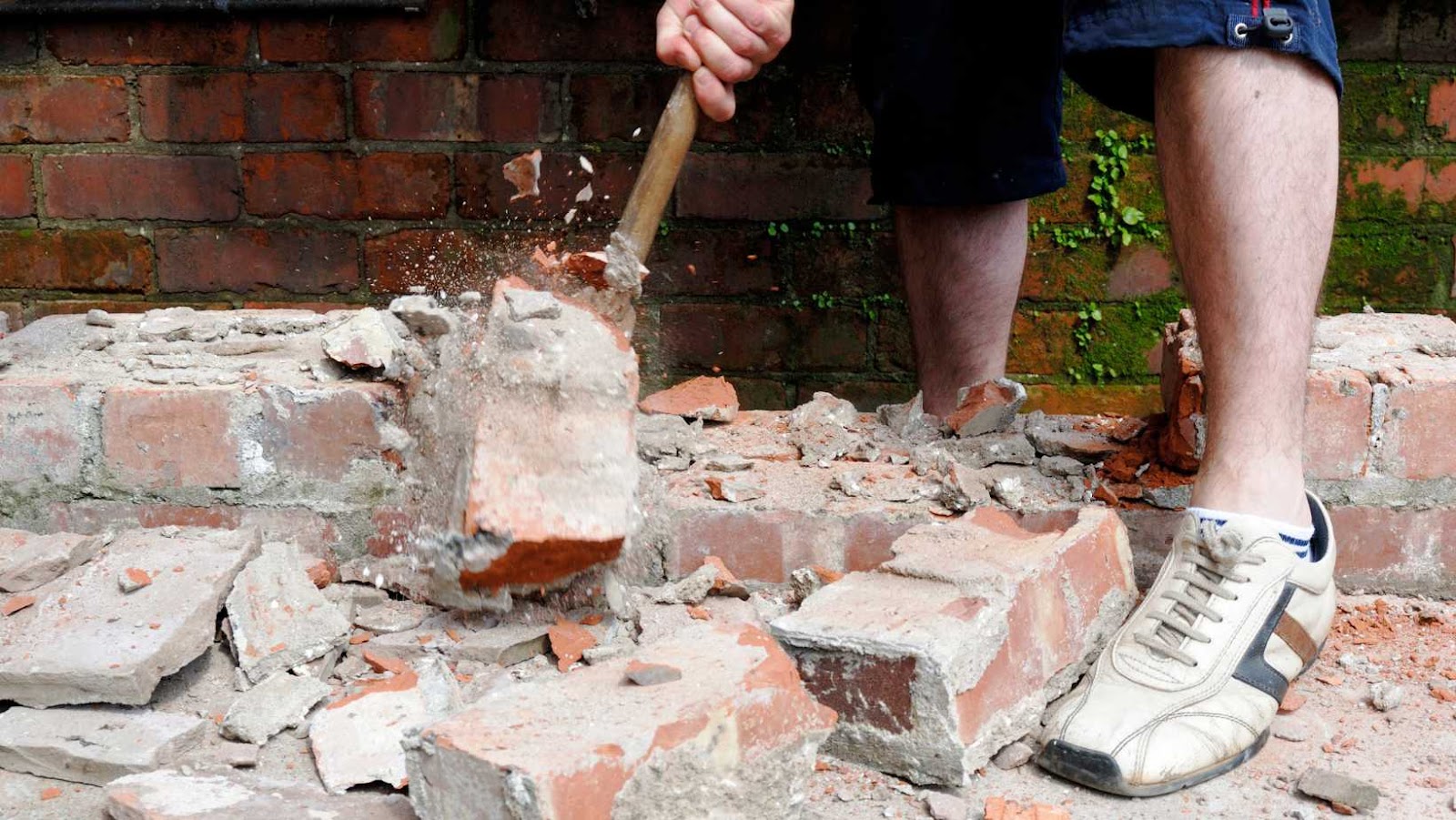Why People Are Knocking Their Houses Down
It has been a popular trend lately to knock down houses and start from scratch. Some people do it for the fun of it, while others do it because they think it will save them money. Let’s take a look at the safety concerns of knocking a house down.
Financial Reasons
There are many reasons why people might choose to demolish their houses rather than selling them or leaving them empty. In some cases, the house may be in such a state of disrepair that it is not worth repairing, or the cost of repairs may be so high that it is not economically viable to carry out the work. In other cases, the owner may simply want to start from scratch and build a new house on the same site. Whatever the reason for demolishing a house, there are certain financial considerations that need to be taken into account. The first is the cost of actually carrying out the demolition work. This will vary depending on the size and type of house, but it is important to get a few quotes from different companies before making a decision. The second financial consideration is what to do with the land once the house has been demolished. If there are no plans to build a new house straight away, then the land will need to be cleared and leveled before it can be sold or rented out. This can add significant costs onto the project, so it is important to factor these in when budgeting for a house demolition.
Emotional Reasons
It can be an emotional decision to knock your house down. Whether it’s because you’ve outgrown your home and need something bigger, or you want to start again after a relationship break-up, there are often strong feelings involved in the decision. There can also be practical reasons for knocking your house down. If your home is in a state of disrepair and it would cost more to renovate than rebuild, it might make sense to start from scratch. Or, if you’ve inherited a property that you don’t want to live in, knocking it down and starting again can be a way to release the emotional attachment and move on. Whatever your reasons for wanting to knock your house down, it’s important to weigh up all the pros and cons before making a decision. There are some safety concerns to consider, as well as the practicalities of finding somewhere else to live while the work is carried out. And of course, there’s the cost – demolishing a property isn’t cheap.
Emotional reasons
Practical reasons
-The property is in disrepair and it would cost more to renovate than rebuild
-Inherited a property that is emotionally attached to
– wanting to start again
How Much Does it Cost to Knock a House Down?
The safety concerns of knocking a house down include the potential for injury to workers and passersby as well as damage to surrounding buildings. In addition, there is the possibility of asbestos fibers becoming airborne during the demolition process.

The Average Cost
The average cost of knocking a house down is £12,000. This includes the cost of demolishing the property and disposing of the debris. The price will vary depending on the size and condition of the property, as well as any local regulations that may be in place.
The Cost of Demolishing a House With Asbestos
The cost of demolishing a house with asbestos will vary depending on the size and location of the house as well as the amount of asbestos that needs to be removed. The average cost of asbestos removal is $2,000, but it can range from $1,000 to $4,000.
What Are The Safety Concerns of Knocking a House Down?
Knocking a house down can be a dangerous process if not done correctly. There are a few safety concerns to take into account before knocking a house down. The first concern is the stability of the house. The house must be checked to see if it is structurally sound before any demolition can start. If the house is not structurally sound, it could collapse during the demolition process and injure or kill anyone in the vicinity. The second concern is the presence of asbestos. Asbestos is a dangerous material that can cause serious health problems if it is inhaled. If the house being demolished contains asbestos, it is important to have it removed by a professional before any demolition takes place.
Asbestos
Asbestos is a known carcinogen, and its fibers can cause serious health problems if inhaled. If you’re planning to demolish a home built before 1980, it’s important to have it tested for asbestos before proceeding. The cost of testing and removal can be significant, but it’s a necessary expense to protect yourself and your workers from potential exposure.
Lead
Lead is a chemical element with the symbol Pb (from the Latin plumbum) and atomic number 82. It is a heavy metal that is denser than most common materials. Lead is soft and malleable, and has a relatively low melting point. When freshly cut, lead is silvery with a hint of blue; it tarnishes to a dull gray color when exposed to air. Lead has the highest atomic number of any stable element and three of its isotopes each include an unstable nucleon making the element radioactive; of these, Pb-210 has a half-life exceeding 22 million years. Lead is produced from naturally occurring monazite sands as a by-product of removing phosphate minerals from other ores; as such it ranks as one of the world’s most recycled materials, being collected and reused mainly in lead–acid batteries or as radiation shielding or solder in electronic components. Despite this recycling, some exposure to lead persists: lead paint on old buildings continues to pose serious risks for children who may ingest chips or inhale dangerous dust particles; workers in leaded industries risk exposure at their jobs; and countries whose ammunition uses large amounts of lead are contaminated by its discharge during warfare or through careless gun use.

Mold
One of the dangers of demolishing an old house is stirring up mold. If the home has been standing for a while, it’s likely that mold has taken root in the walls, floors and ceilings. When the house is demolished, this mold can become airborne and pose a serious health hazard to anyone in the area.
How to Safely Knock a House Down
There are a few things you should take into consideration when you’re planning on knocking a house down. The first thing you need to do is make sure that the area around the house is clear of any people or animals. You also need to make sure that the utilities are turned off before you start demolition.
Hire a Professional
When it comes to knocking a house down, it’s always best to hire a professional. Not only will they have the right equipment and experience, but they’ll also be insured in case anything goes wrong. If you do decide to do it yourself, there are a few things you need to know first. The most important thing is to make sure the area is clear of people and animals before you start. Once you’re sure the area is clear, you can start by taking out any support beams or load-bearing walls. These are usually located in the middle of the house, so be careful not to take them out until you’re sure the rest of the house is ready to come down.
Once the support beams are gone, the rest of the house should start to fall fairly easily. If it doesn’t, you may need to use some explosives to help finish the job. But be very careful with explosives – they can be very dangerous if used incorrectly!
Follow The Proper Safety Protocol
When knocking a house down, it is important to follow the proper safety protocol to avoid injuries. Here are some tips:
-Wear the proper safety gear, including a hard hat, safety glasses, and earplugs.
-Use the proper tools for the job, such as a sledgehammer or wrecking ball.
-Avoid electrical hazards by disconnecting power sources before starting work.
-Be aware of your surroundings and watch for falling debris.
-Work with a partner to help stabilize the structure and spot each other during demolition.
If you follow these safety tips, you will be able to safely and effectively knock a house down.
